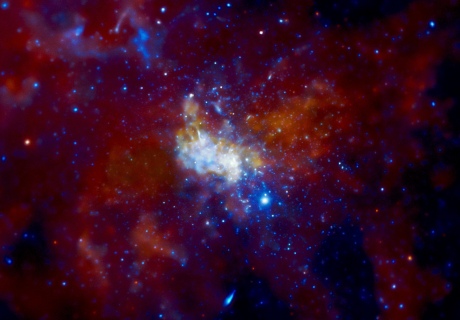Science from scratch: just how big is a supermassive black hole?
Scientists can be prone to the occasional hyperbole, but in the case of supermassive black holes is it justified? Chris Clarke investigates.
Black holes are deeply mysterious objects that exist throughout the universe: giant plugholes in space that drag in and consume anything that strays too close. Their enormous gravitational pull means that even light cannot escape making ‘black hole’ a pretty good description all round.
The key to a black hole’s immense power lies in its mass. Our Sun for example, weighs the same as 332,946 Earths, giving it enough gravity to keep our whole solar system in place around it. Imagine then, the gravitational pull of something 100 times the mass of our Sun? What about one thousand times? One billion? This is the sort of gravity that keeps whole galaxies in place.

Sagittarius A* - an astronomical radio source at the center of the Milky Way galaxy believed to be the site of a supermassive black hole
Until recently, the largest black holes observed were the supermassive black holes, weighing in at a minimum of 100,000 times the mass of our Sun.
Supermassive black holes are thought to have originated in the early universe, growing larger over the millennia by sucking in matter or merging with other black holes. These giants reside at the centre of galaxies and are surrounded by enormous discs of gas and dust that burn with luminous ferocity. There’s even one at the centre our own galaxy, the Milky Way.
Now, however, a new class of Titan has emerged. Right at the centre of a number of galaxies that crowd together to form large clusters scientists have discovered black holes that are over 10 billion times the mass of our own sun. These have been imaginatively christened the ‘ultramassive black holes’ by astronomers and are without a doubt the most massive objects ever observed by mankind.
Will astronomers soon be reporting on ‘über-, hyper-, or mega-massive black holes’? Only time will tell.
Article text (excluding photos or graphics) © Imperial College London.
Photos and graphics subject to third party copyright used with permission or © Imperial College London.
Reporter
Press Office
Communications and Public Affairs
- Email: press.office@imperial.ac.uk
